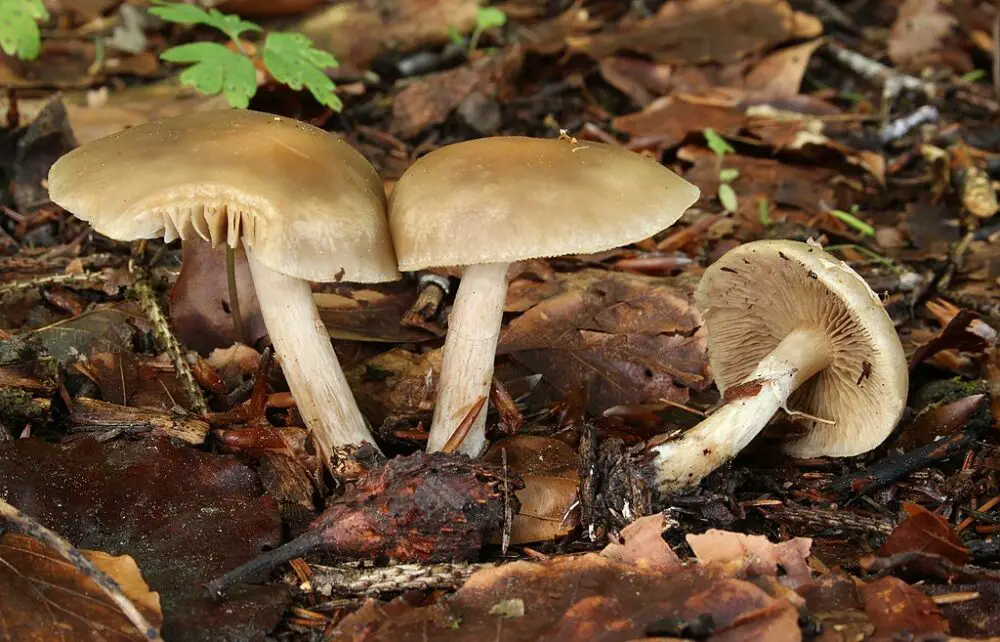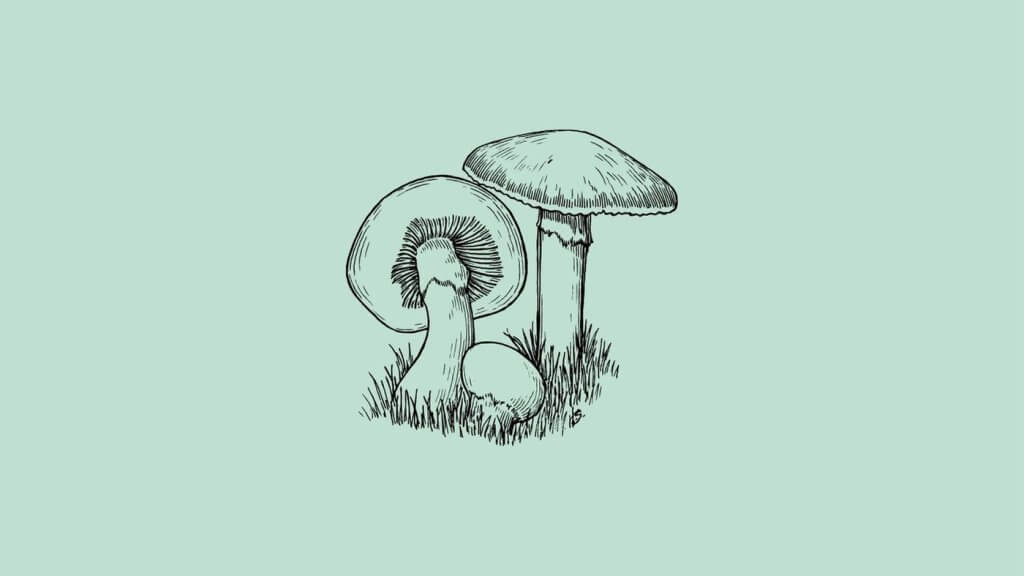Agrocybe praecox (spring fieldcap), appears earlier than many other mushrooms, during late spring and early summer. Spring fieldcap is an edible mushroom when well cooked, although it’s not favored for culinary use.
Agrocybe praecox Profile
Agrocybe praecox, common name spring fieldcap, is part of the Strophariaceae family, although this wasn’t always the case.
When first described by Hendrik Persoon, the name he assigned was Agaricus praecox. At the time, most of the gilled mushrooms were placed in the Agaricus genus, which was not surprising.
Later, with greater study and closer microscopic inspection, many of these were reclassified, including Agrocybe praecox, which now has the following designation:
What Are You Foraging For Right Now?
We're thrilled to hear your ideas. What would you like to submit today? Feel free to share your thoughts and experiences with us.
| Phylum | Basidiomycota |
| Class | Agaricomycetes |
| Order | Agaricales |
| Family | Strophariacae |
Spring fieldcap, sometimes known as spring agaric, is part of a complicated group of fungi that can be difficult to distinguish from one another.
This grouping includes the following:
- Agrocybe dura
- Pholiota praecox
- Pholiota togularis
- Agrocybe praecox
Spring fieldcap appears earlier than many other mushrooms, during late spring and early summer. This is how it earned its scientific name. Agrocybe can be broken out as agro – of fields, and cybe – head or cap. Praecox is Latin and translates as ‘developing or appearing early.’
Because of the classification complexity, several synonyms are associated with the spring fieldcap.
Among them are:
- Agrocybe gibberosa
- Agaricus togularis
- Togaria praecox
Is agrocybe praecox edible?
Spring fieldcap is an edible mushroom when well cooked, although it’s not favored for culinary use.
The bitter flavor and mealy texture of this mushroom make the distinct possibility of being mistaken for a poisonous cousin too high.
It’s generally considered not worth the risk.
*Check out our guide on the edible yellow fieldcap mushroom.
Where does the spring fieldcap grow?
The spring fieldcap is commonly found across Europe, North America, Germany, and Japan.
It is often located in urban or city areas, fruiting during late spring into early summer. In warmer climates, it may also appear in fall or winter as well.
The spring fieldcap is saprobic on woody debris, often found along hedgerows or in gardens where woodchips or compost have been used.
How to identify agrocybe praecox easily?
The generic features of the spring fieldcap are common to several similar species. This can make the certainty of identification difficult.
Look for the following attributes when identifying the spring fieldcap:
- Convex cap that begins in a yellow-brown color, turning cream to light brown shade as it ages. Caps are roughly up to 3 inches in diameter.
- Gills that are light in color when young turn to a dirty brown as the spores reach maturity. Gills are lightly attached to the stems.
- Light-colored stem that thickens at the end with a thin, fragile ring with a skirt-like appearance that darkens as the spores mature and fall. Mycelial cords that are attached to white rhizomorphs.
- Ellipsoidal spores.
- Spore print that is rusty to brown in color.
- Wrinkled appearance on older specimens.
- Light, flowery smell.


Does the spring fieldcap have any poisonous lookalikes?
The spring field cap can be easily confused with many similar species, some of which can be poisonous or even deadly.
Because there are so many species that resemble the spring fieldcap and because the spring fieldcap isn’t a highly desired mushroom for flavor, texture, or nutritional value, it’s not recommended for eating.
Some of the fungi mostly confused with the spring fieldcap are listed below:
- Several of the Agaricus species, many of which are highly poisonous.
- Brown conehead (Conocybe tenera) – inedible
- Agrocybe acericola: found in eastern North America in forested areas – edibility uncertain
- Agrocybe biological species II: found in western North America in forested areas – edibility uncertain
- Agrocybe dura: prefers grass and typically has a cap that’s paler in color -edibility uncertain
- Agrocybe paludosa: typically found in marshy areas or in bogs. It also has a thinner stem – edibility uncertain
- Fairy ring mushroom (Marasmius oreades): white spores, wide-spaced gills – inedible
Additional information about all of the above mentioned mushrooms can be found on mushroomexpert.com.
Check our video on the 7 most poisonous mushrooms growing in the US (mushroom details and ingestion symptoms included)!
Cooking with the spring fieldcap
For those who feel certain of their identification and would like to eat spring fieldcaps, cooking is a must.
This is true for nearly all foraged mushrooms because the majority can cause some level of gastrointestinal distress when raw.
It’s been suggested that marinating and sautéing the spring fieldcap will reduce the bitter flavor.
Dry sauteing is also a common method for releasing the water contained within a mushroom and intensifying the flavor.
Lorin is a writer, photographer and nature enthusiast in Sacramento, CA. In addition to gardening, she makes a regular practice of forging for edible plants and flowers. Nature nourishes if you know where to look.

